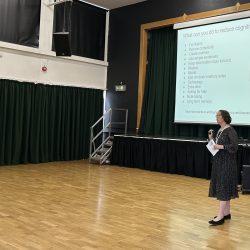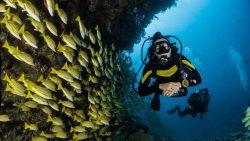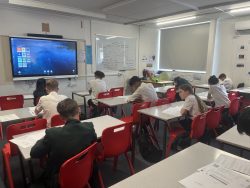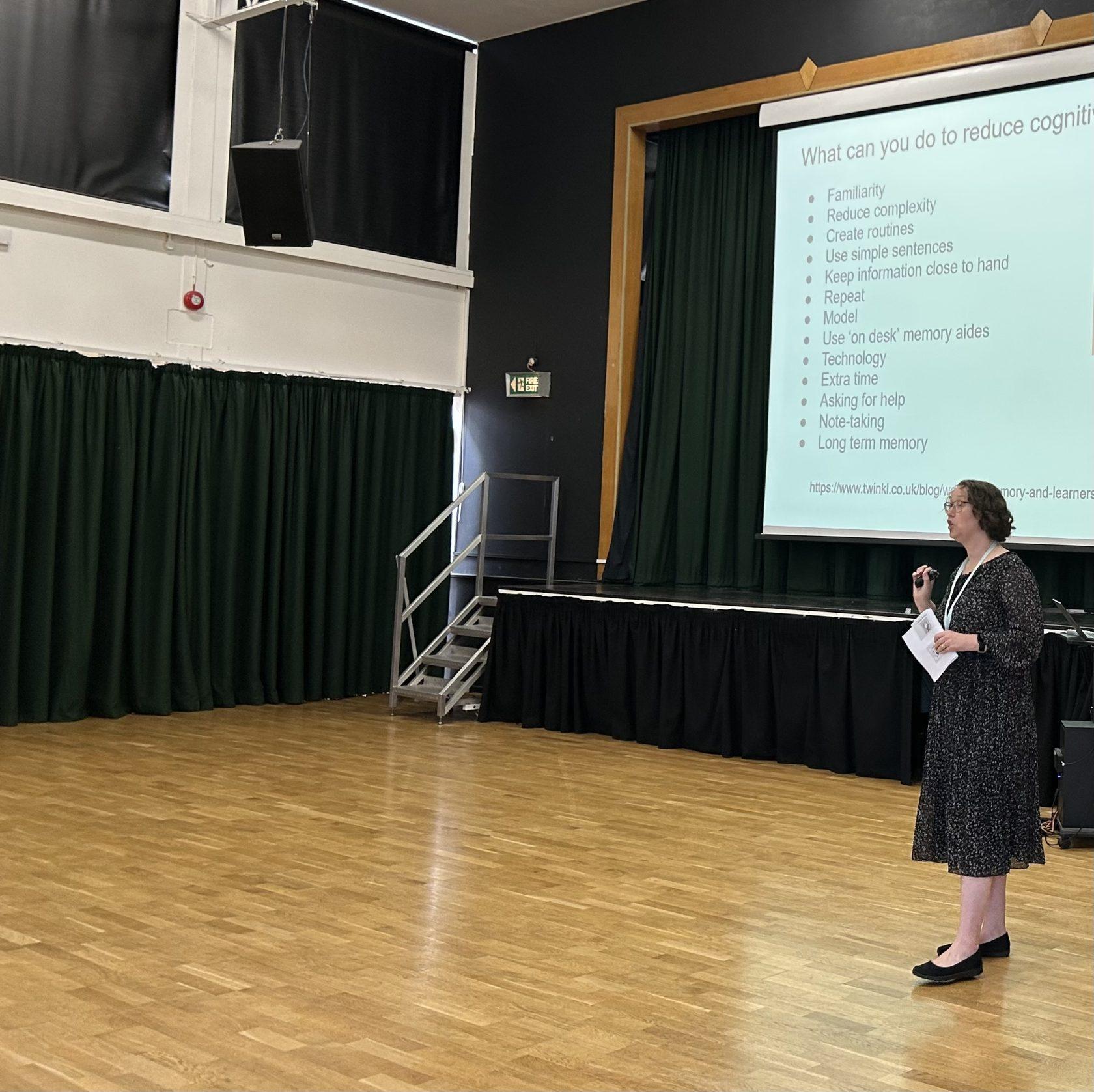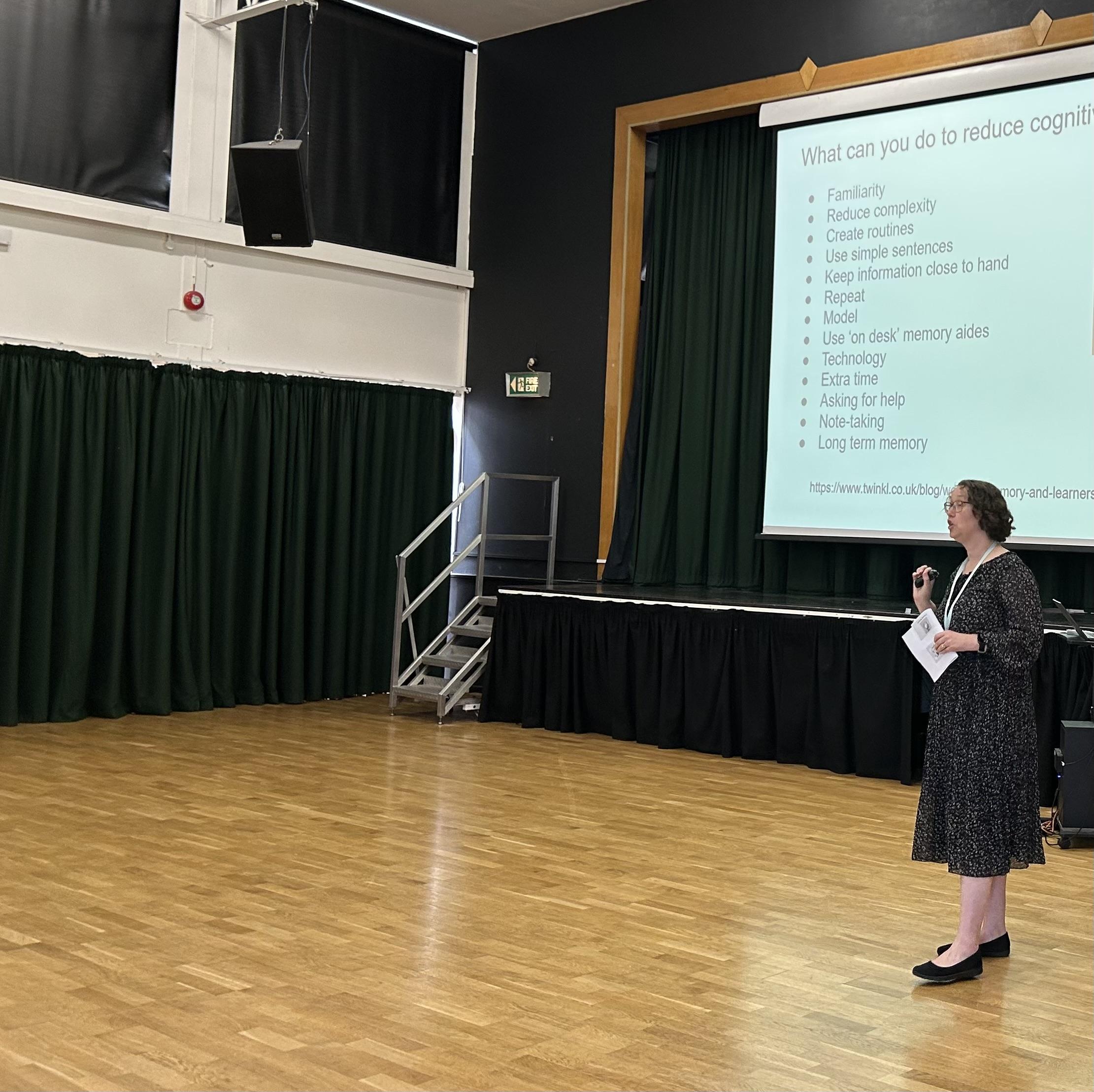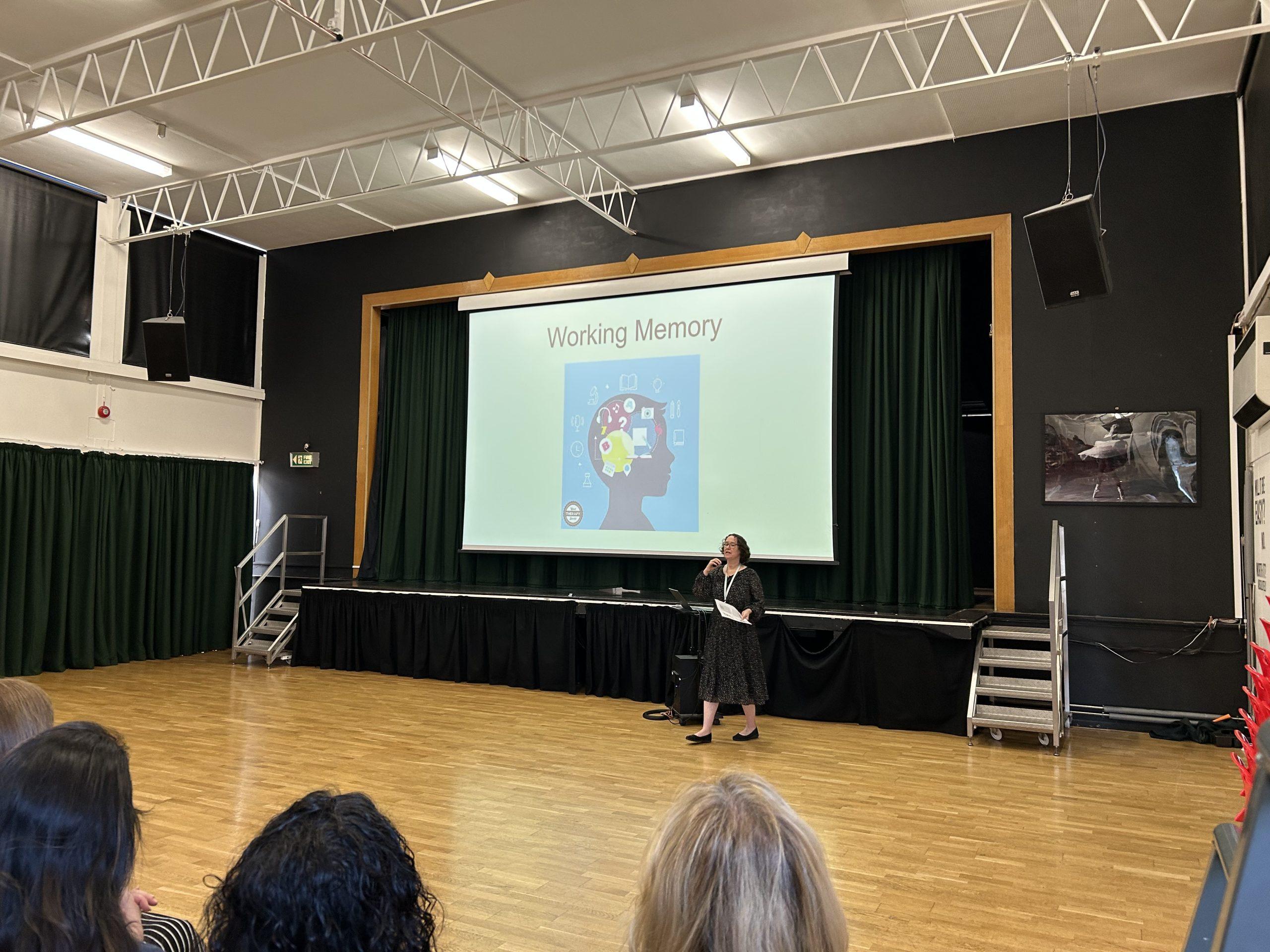Head of Faculty for Learning Support and SENDCo Mrs Seed provided staff with a very timely reminder on Monday morning at our Staff Briefing meeting in the main hall about how to support students with their working memory in lessons.
Working memory is a cognitive system inside our brains that provides us with a limited capacity to hold information on a temporary basis. Working memory is important for all of us as it supports our reasoning and guides our decision-making and behaviour.
Mrs Seed provided staff with some top tips for teachers and Learning Assistants to use in lessons to help students develop a good working memory. These included:
- Establishing clear links to previous learning.
- Making things visual through the use of mind-maps and photographs etc.
- Giving an overview of what the lesson is about at the start of the lesson.
- Keeping things clear and simple.
- Breaking down any information or instructions into shorter chunks.
- Structuring the lesson into short bursts.
- Carefully considering the working memory demands of the tasks set for children – so they only have to hold 1 or 2 pieces of information in their head at one time.
- Providing guides, step-by-step instructions and visual prompts to support learning.
- Supporting writing with personalised word banks, sentence starters, visual prompts and sequencing.
- Ensuring any reading materials are at an appropriate level.
- Displaying key information to support topics – using interactive displays.
All these tips make for a great lesson so it was well worth listening to the reminders.
Head of Faculty for Learning Support and SENDCo Mrs Seed provided staff with a very timely reminder on Monday morning at our Staff Briefing meeting in the main hall about how to support students with their working memory in lessons.
Working memory is a cognitive system inside our brains that provides us with a limited capacity to hold information on a temporary basis. Working memory is important for all of us as it supports our reasoning and guides our decision-making and behaviour.
Mrs Seed provided staff with some top tips for teachers and Learning Assistants to use in lessons to help students develop a good working memory. These included:
- Establishing clear links to previous learning.
- Making things visual through the use of mind-maps and photographs etc.
- Giving an overview of what the lesson is about at the start of the lesson.
- Keeping things clear and simple.
- Breaking down any information or instructions into shorter chunks.
- Structuring the lesson into short bursts.
- Carefully considering the working memory demands of the tasks set for children – so they only have to hold 1 or 2 pieces of information in their head at one time.
- Providing guides, step-by-step instructions and visual prompts to support learning.
- Supporting writing with personalised word banks, sentence starters, visual prompts and sequencing.
- Ensuring any reading materials are at an appropriate level.
- Displaying key information to support topics – using interactive displays.
All these tips make for a great lesson so it was well worth listening to the reminders.

























































































































































































